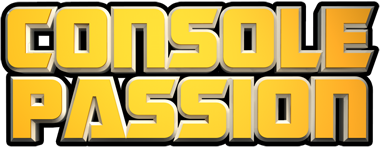Website Temporary Closed
Atari 7800
The Atari 7800 was released by Atari in 1986 (a test market occurred in June 1984). The 7800 was designed to replace the unsuccessful Atari 5200, and re-establish Atari's market supremacy against Intellivision and Colecovision. With this system, Atari addressed all the shortcomings of the Atari 5200: it had simple digital joysticks; it was almost fully backwards compatible with the Atari 2600; and it was affordable (it was originally priced at $140 USD).
The Atari 7800 was the first game system from Atari which was designed by an outside company (by the General Computer Corporation, future consoles designed outside the company were the Atari Lynx and the Atari Jaguar). The system was designed to be upgraded to a fully-fledged home computer — a keyboard was developed, and the keyboard had an expansion port (which was the SIO port from Atari's 8-bit computer line) for the addition of peripherals like disk drives and printers (this should not be taken to imply that this computer expansion would have allowed the 7800 to run programs designed for Atari's computers, as the two architectures were entirely different).
[collapse collapsed title=read more...]
GCC had also designed a 'high score cartridge,' a battery-backed RAM cart designed for storing game scores. Atari manufactured none of these accessories, and after the initial production run they also eliminated the expansion port. In 1987, the Atari XEGS was released and it came with a light gun, called the XG-1. The XG-1 was fully compatible with the 7800 and the 2600, and Atari released four games on the 7800 that utilized this peripheral.
The 7800 was test-marketed in southern California in June 1984. One month later, Warner Communications sold Atari to Jack Tramiel, who did not want to build a video game console. He pulled the plug on all projects related to video games and decided to focus on Atari's existing computer line in order to begin development of the new 16-bit computer line (which appeared as the Atari ST). The 7800 was re-introduced in winter 1986 after the success of the Nintendo Entertainment System proved that the video game market was still viable. Unfortunately, by the time the 7800 made it to market, the NES had 90% of the market cornered and the rival Sega Master System had most of what was left.
The Atari 7800's technical superiority is still debated today. The architecture is essentially just an Atari 2600 with a slightly better CPU and an advanced graphics chip (MARIA). While the system could handle far more moving objects on screen (up to 100) than any of its competitors, its audio capabilities were limited due to lack of board space. The designers allowed games (notably ports from the Atari 400/800 computer line) to include a POKEY audio chip in the cartridge. Only two games, Ballblazer and Commando used the POKEY chip. The 7800 was also more difficult to program than other systems available at the time, though this was tempered by the fact that many game programmers at the time were already well versed in the 2600.
The 7800 faced the severe software drought that would become the mark of all Atari consoles sold after the video game crash. Relatively few titles were released by Atari, many of them unpolished and lacking in features, or even games that already were in previous Atari systems. And there was virtually no effort by Atari to recruit third party developers, aside from a few titles from Absolute, Activision, and Froggo.
[/collapse]
- HOME


- PRODUCTS

- 3DO
- Amiga CD32
- Amstrad GX4000
- Atari 2600
- Atari 7800
- Atari Jaguar
- Atari Jaguar CD
- Atari Lynx
- Bandai Wonderswan
- Coleco
- Colecovision
- Famicom
- Famicom Disk System
- Grandstand
- JAMMA
- Mattel Intellivision
- MB
- Microsoft Xbox
- MSX
- Neo Geo AES
- Neo Geo CD
- Neo Geo MVS
- Neo Geo Pocket
- Nintendo 64
- Nintendo Game and Watch
- Nintendo Gameboy
- Nintendo Gameboy Advance
- Nintendo Gameboy Colour
- Nintendo Gamecube
- Nintendo NES
- Nintendo Virtual Boy
- PC Engine
- PC Engine CD
- Philips CDI
- Sega 32X
- Sega Dreamcast
- Sega Game Gear
- Sega Genesis
- Sega Master System
- Sega Mega CD
- Sega Megadrive
- Sega Nomad
- Sega Saturn
- Sony Playstation
- Sony Playstation 2
- Super Famicom
- Super Nintendo
- Texas Instruments
- Tiger Game Com
- Tomy
- Vectrex
- Japanese Video Game Imports
-

- MODIFICATIONS

- Switchless Modification
- Modification Sega 32X
- Modification Sega Dreamcast
- Modification Sega Megadrive
- Modification Neo Geo AES
- Modification Neo Geo CD
- Modification Nintendo NES
- Modification Sega Master System
- Modification Sega Mega-CD
- Modification Sega Nomad
- Modification Sega Saturn
- Modification Super Nintendo
-

- TECHNICAL INFO


- NEWS


- ABOUT US


- MEMBERS


- CONTACT US


Log on
x
Just In!







 Save time
Save time